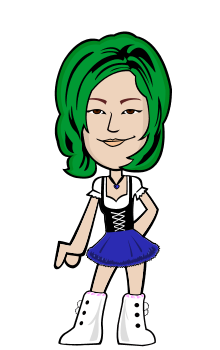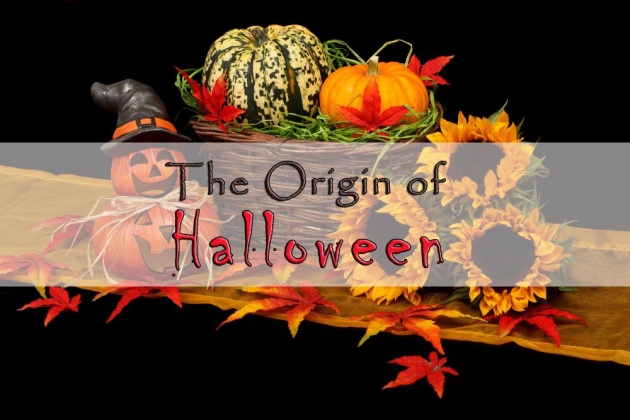
Image credit: PublicDomainPictures via Pixabay / Edited with Photoshop
Pumpkins, costumes, candies, and scary decorations--what do all these tell you? Halloween, of course! Halloween is probably the second most anticipated and celebrated holiday in the United States after Christmas--and is celebrated every 31st of October. This is a time when everything creepy and scary comes to play on the streets asking for candies. You may even find yourself at the receiving end of a prank if you don't give these little goblins their sweet treats. Spooky stories are also shared around bonfires. Scary Holloween movies and haunted houses are also a thing during this time. But, what exactly is Halloween? Where did it come from? What is its origin--its history?
The Origin of Halloween
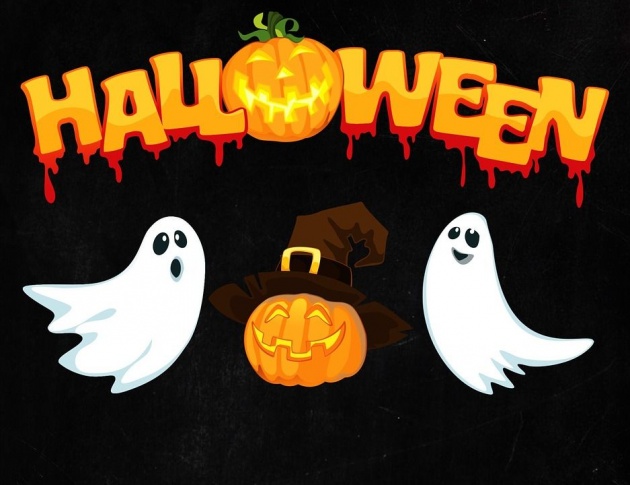
Image Credit: https://www.childrensdiabetesfoundation.org/
The term Holloween was coined by Scottish poet Robert Burns in his 1785 poem of the same name. It's just a fancy way of saying the night before All Saint's Day--which already shows the influence of Christianity on this pagan ritual.
So where does the name itself come from? According to the Online Etymology Dictionary, it's actually two words smushed together. "Hallow" — or holy person — refers to the saints celebrated on All Saints' Day, which is November 1. The "een" part of the word is a contraction of "eve" — or evening before.
Source: www.businessinsider.com
The origin of Halloween or All Hallows' Eve can be traced as far back as approximately 2000 years ago to the Celtic festival called Samhain which was celebrated on the 1st of November in Ireland, Scotland, and the Isle of Man. This is also considered as their new year. This day marks the end of their summer and harvest season and the start of the dark, cold winter, which was often linked to death.
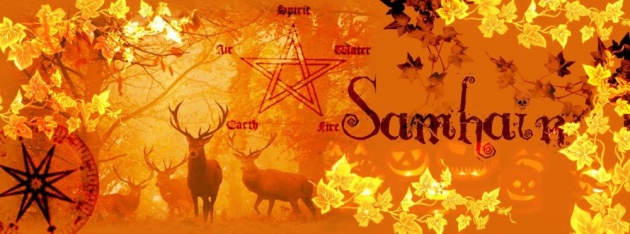
Image Credit: http://www.circleofthestag.com/
Samhain is also that time of the year when the Celts commune with the dead as they that this was the day when spirits of the diseased would cross over to the other world. Additionally, they believe that the presence of these otherworldly spirits made it easier for the Druids (Celtic priests) to divine the future.
During this event, the Druids would light huge sacred bonfires where everyone would gather to offer sacrifices to the Celtic deities by burning crops and animals. The Celts also wore costumes that often consists of animal skins and heads as they attempt to tell each other's fortunes.
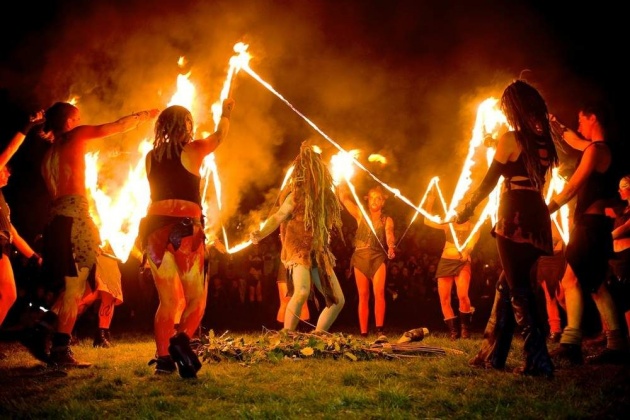
Image Credit: https://www.independent.ie/editorial/
Some historians believe that Samhain is the Celts' way of playing with the concept of death, which they could not do at other times of the year. However, not all historians agree on this. Some historians, like Nicholas Rogers who is a professor at York University in Toronto, are not convinced that Samhain is dedicated particularly to the dead or ancestor worship. In his book "Halloween: From Pagan Ritual to Party Night", Rogers says that the ritual is more about the changing of seasons and the preparation for the dormancy of nature as winter sets in rather than it being about death and evil.
"According to the ancient sagas, Samhain was the time when tribal peoples paid tribute to their conquerors and when the sidh [ancient mounds] might reveal the magnificent palaces of the gods of the underworld," Rogers wrote
Halloween Comes to America
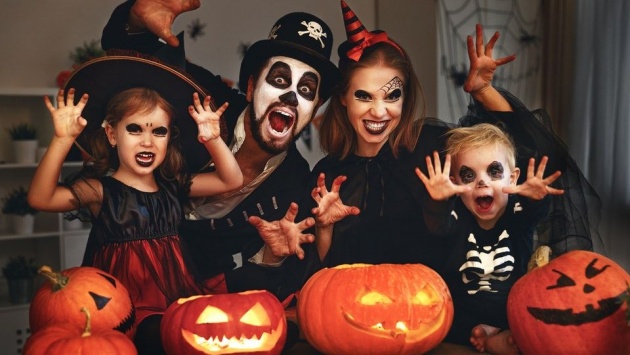
Image Credit: https://www.romper.com/
European immigrants brought with them their rituals and customs when they came to America--and that includes Halloween. However, the celebration of Halloween in colonial New England was severely limited due to the strict Protestant beliefs in the Northern colonies. This is the reason why there aren't many accounts of Halloween in colonial America during this time. It was, however, more popular in the colonies found in the southern area, particularly Maryland. This is probably because there were more diverse European communities that have settled in that area. Their culture and customs, throughout the years, have mixed with those of the American Indians, giving birth to a distinctly American version of Halloween.
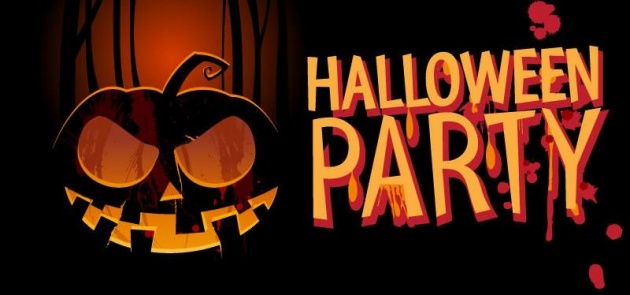
Image Credit: https://www.sanford365.com/
The first ever recorded celebrations included public events--such as Halloween parties--where neighbors gather to share ghost stories, dance, sing, and tell each other's fortune--still pretty much similar to how the Celts used to celebrate Samhain. Aside from the ghost stories, the Colonial Halloween festivities also included mischief-making of all sorts. Annual autumn festivities became common by the middle of the 19th century, but Halloween is still yet to be celebrated across the country.
In the second half of the 19th century, America experienced an influx of new immigrants from different parts of the world. This includes the nearly two million Irish immigrants who were fleeing the Irish Potato Famine, which helped popularize the celebration of Halloween all over the country.
The evolution of Halloween in the United States did not stop there as it started to transition from a religious holiday to a more communal celebration by the 1900s. As time went by, the scary and superstitious aspects of the celebration were replaced with a more festive and kid-friendly atmosphere. Merchants and business owners saw this as an opportunity to cash in on the festivities which brings us to our next topic.
The Commercialization of Halloween
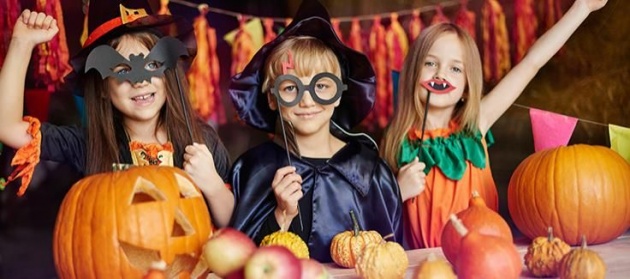
Image Credit: https://www.gigmasters.com/
By the early 1900s, Halloween had become less about religious and superstitious beliefs and more a community-centered holiday. However, despite the best efforts of various schools and communities, vandalism became prevalent during this time.
Town leaders finally found a way to limit vandalism in the 1950s. Soon, Halloween became a holiday directed specifically at young children. During this time, the old practice of trick-or-treating was revived, which was an inexpensive way to celebrate Halloween. In this new (old) practice, families may avoid being the recipient of tricks by simply giving small treats to the neighborhood children.
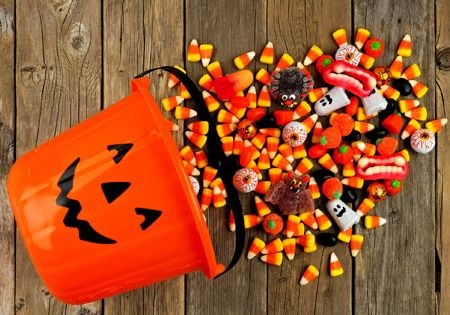
Image Credit: https://www.mouthhealthy.org/
Hence, a new American tradition was born--which continues to grow up to this day.
However, as Halloween became more popular and secularized, the more merchants are targeting this holiday in order to sell their products. It is estimated that Americans spend approximately $6 billion annually on Halloween. In fact, it is the second largest commercial holiday in America after Christmas.
Did you know? One quarter of all the candy sold annually in the U.S. is purchased for Halloween.
Source: history.com
Speaking of trick-or-treating, here's a video of parents pranking their kids, telling them that they ate all the candies they've collected during Halloween. Watch the hilarious reactions of their kids here.
Video Credit: Jimmy Kimmel Live via Youtube
Final Thoughts
Many scholars agree to disagree about the connection between Halloween and Samhain. But since All Saint's Day and Samhain are celebrated too closely together on the calendar, it is widely believed that they have somehow influenced one another and later merged into this one event we now celebrate as Halloween.
~~oO0Oo~~oO0Oo~~oO0Oo~~
Thanks for reading! Have a wonderful day ahead of you and keep smiling. :)
Written by Chineyes for bitLanders
For more quality blog posts, you may visit my page
Not yet on bitLanders? Sign up now and be rewarded for sharing ideas, photos, and videos!

